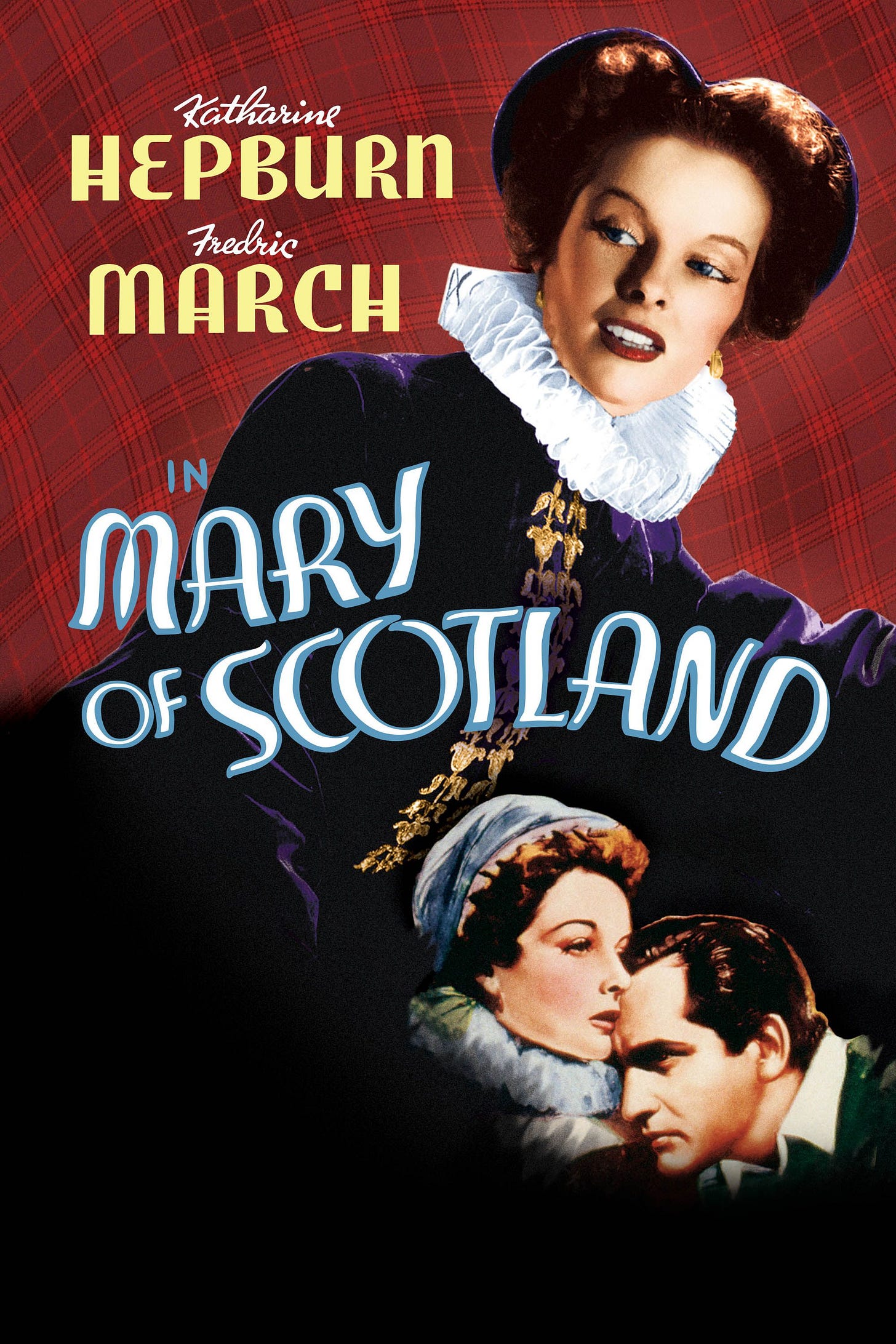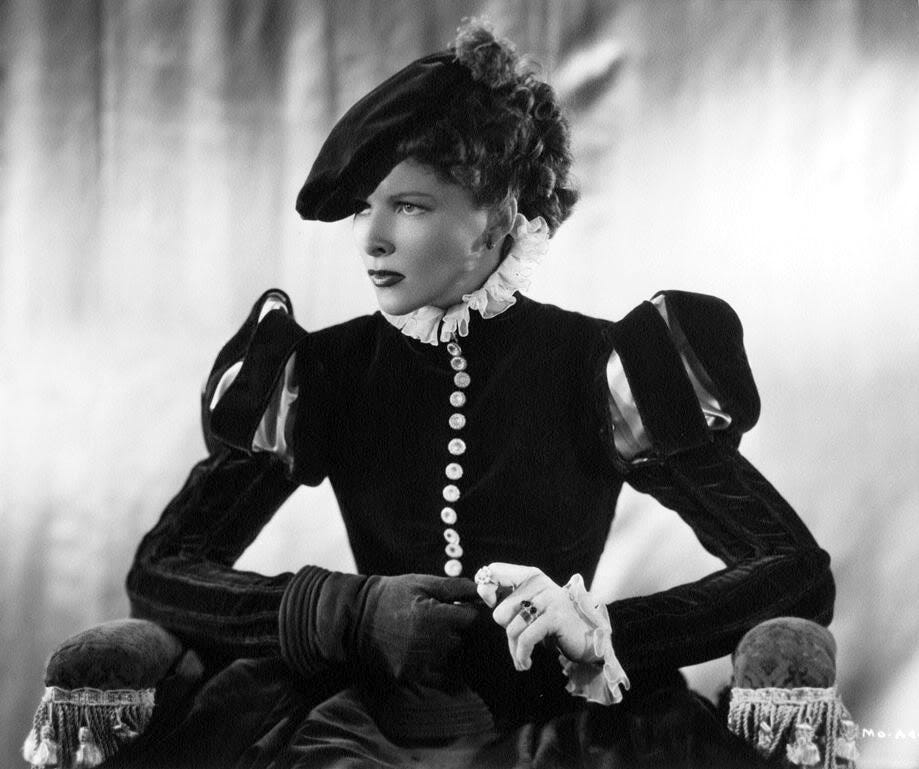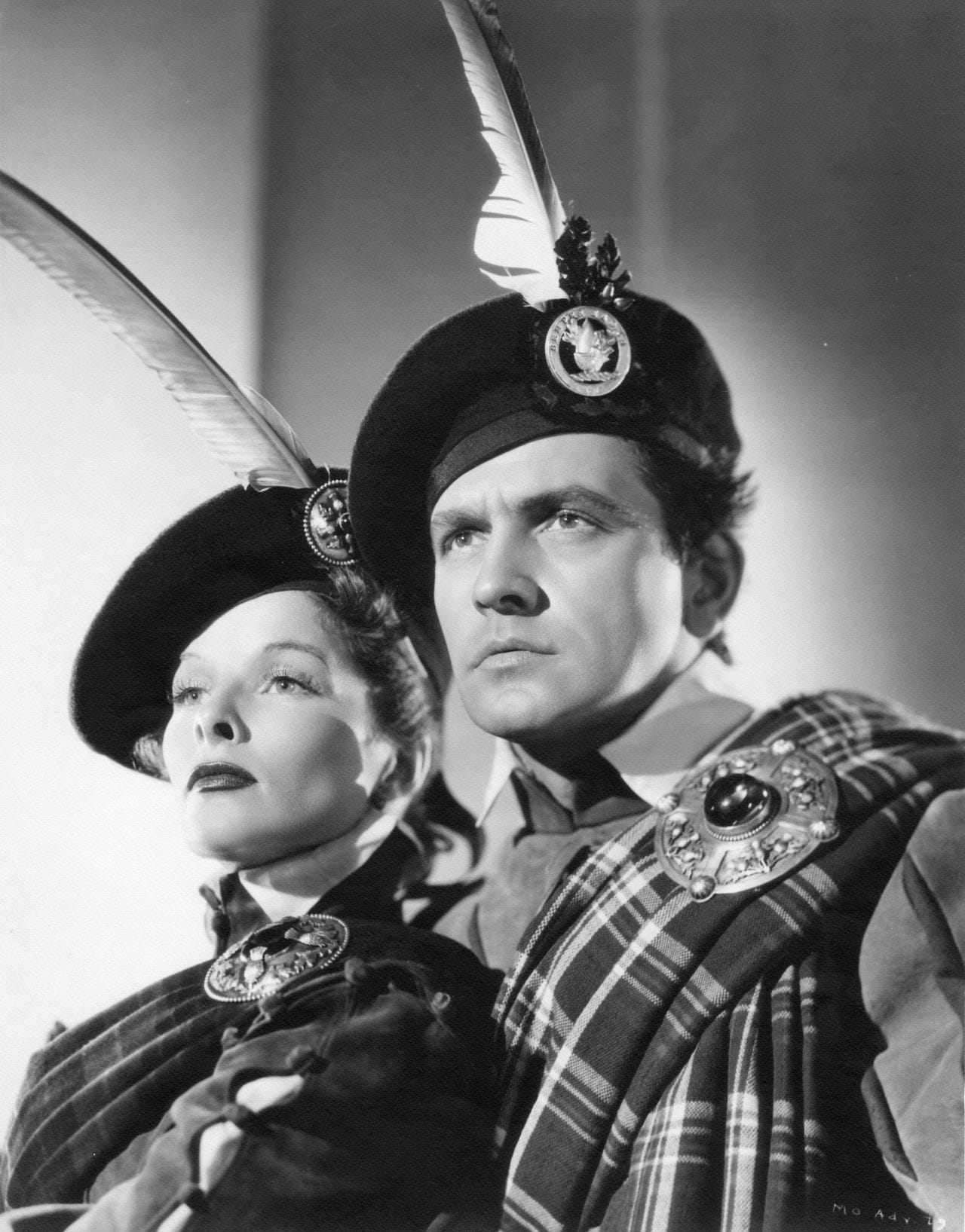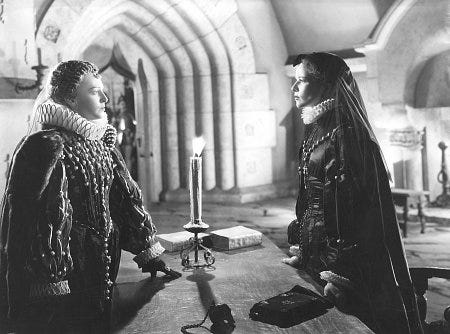The Guardian certainly wasn’t exaggerating when it claimed that Mary of Scotland (1936) was ‘a little heavy on the romantic goo’. 1930s Hollywood loved a good historical romance, and John Ford’s portrayal of Mary Queen of Scots simply fed that demand.
Adapted from Maxwell Anderson’s play and starring Katherine Hepburn in the titular role, Mary of Scotland was set to be a Hollywood hit! …Yet that dream crashed and burned. Despite its gorgeous costumes and magnificent sets, Mary of Scotland proved to be a stilted and unremarkable flop.
Perhaps this was unavoidable? For starters, Katherine Hepburn lacked empathy for Mary and preferred to play her rival - Queen Elizabeth I. Secondly, despite his passion for Katherine off-screen, the director John Ford soon lacked interest in the film and it began to lose direction. It is well known that regardless of their love affair behind the scenes, Ford and Hepburn often clashed on set over the film’s production, with Katherine directing the more romantic scenes between Mary and Bothwell herself, after Ford proclaimed them to be too soppy and walked off in a huff!
With so much disinterest and discord on and off screen, there is little wonder that Mary of Scotland wasn’t a box office hit. However, from a historian’s perspective, this film was an overwhelming disappointment for many other reasons.
At first glance, Hepburn’s Mary looked promising. Returning to Scotland after 13 years in France, Mary of Scotland opens with a badass queen, who puts the ambitious Scottish Lords in their place and defies their domineering influence. Here was a woman who was not afraid to put her foot down and establish her queenly authority! Rather refreshingly, Mary wants to do things on her own terms, without the manipulation and intimidation of the men who resented her return to power. When confronted by her Scottish Lords about her single status, Mary cries: “I am going to live my own life; do as I say. I refuse to marry. I love no one and I shall marry no one. I’m going to begin to be myself, Mary Stuart!”.
I mean, wow! Yes Mary, you go girl!
With lines like this, Mary of Scotland looked to dismantle the traditional image of Mary as the ineffectual, failed queen; who in contrast to Elizabeth I, ruled with her heart rather than with her head, and eventually paid the ultimate price on the scaffold. Instead, here was a woman who had authority and agency; who didn’t marry recklessly, and wished to succeed within a patriarchal society. For modern feminists today, this film appeared to be way ahead of its time…
…But that soon proved to be a mirage. Enter Earl Bothwell, and the feisty independent queen seemed to disappear before our very eyes!
Instead, viewers are treated to the usual depiction of a lovesick queen, whose forbidden love with the dashing Bothwell caused civil war, imprisonment, abdication and execution. Again, it belittled Mary’s reign to a tragic romance. Again, it disregarded historical accuracy for entertainment. Again, Mary of Scotland cemented the negative stereotypes and damaging falsehoods surrounding Mary’s legacy. Dammit!
Now, whenever Mary was in distress or threatened (namely by the Protestant firebrand, John Knox), the handsome, swashbuckling, overtly-masculine Bothwell came to the rescue. With the sound of bagpipes hailing the arrival of this knight in shining armour, Mary’s strength and courage is replaced by Bothwell’s heroics. Suddenly, this headstrong monarch dissolves into a languishing and uninspiring lover, who declared that from the start, she “always belonged to [Bothwell]” and refuses to leave him, despite risking her life and her throne. What’s more, Mary’s blatant disregard for her throne had me tearing my hair out! Whilst begging Bothwell to take her with him, Mary declares: “What’s my throne? I’d put a torch to it for any one of the days I’ve had with you. They’ve been so few.” Yes, it’s romantic… but it’s also hugely frustrating and problematic in its inaccuracy.
It is Bothwell who is the hero. It is he who saves Mary, and it is he who keeps Mary’s reign afloat during times of hardship - not Mary. Not only did the film give Bothwell all the credit and undermine Mary’s abilities; it also ignored the real Mary’s claims that Bothwell assaulted her, and forced her to marry him against her will. Audiences are encouraged to champion Bothwell and adore him as much as Mary does, rather than see him as the horrific brute he truly was. Thus, Mary of Scotland is a Disneyfied celebration of traditional gender roles, such as dominating males and submissive females, rather than the hard-hitting reality of a toxic relationship. By falsifying (or at best, ignoring) a woman’s traumatic experience in favour of entertainment, in my eyes Mary of Scotland did the real Queen’s memory a huge disservice.
Now I won’t rant for too much longer, as I know you all have busy lives to lead! But just hear me out on this one - it’s my final point, I promise!
As a lover of both Elizabeth and Mary, I hate it when the two women are pitted against each other. And Mary of Scotland does that exceptionally well. Whilst Mary is overly feminine, Elizabeth appears rather masculine. The Scottish queen is often featured in domestic scenes; surrounded by her ladies, attending to her baby, or simpering over Bothwell. Elizabeth on the other hand, is depicted in council meetings, or discussing political matters with the men around her. She’s almost vilified for her ‘unnatural’ status, whilst Mary is celebrated for striving towards traditional feminine pursuits, which utterly disregards the real Mary’s achievements and capabilities.
The contrast between Mary and Elizabeth really comes to the fore in the final scenes, where the seemingly unavoidable, - yet hugely inaccurate, - meeting between the two queens is portrayed. Upon visiting Mary during her imprisonment, Mary mocks Elizabeth’s unmarried status by stating: “You’re not even a woman.”. In retaliation Elizabeth replies: “I’m a queen. You’ve been a woman. See where it’s brought you.”. The dialogue implies that Elizabeth was the ultimate champion, with her prioritisation of the throne over her personal desires allowing her to live and rule successfully, whilst Mary’s focus on marriage and male protection caused her downfall.
During the final scene Mary refutes this belief; encouraging viewers to see her and her traditional feminine values as the ultimate winners instead. When Elizabeth accused Mary of throwing away her kingdom for Bothwell, Mary argued: “Aye. And I’ll do it again a thousand times. …It has brought me a happiness you’ll never know.”. Yes, you could say that the script champions Mary’s cause, by presenting her as a loveable victim and relatable woman, rather than as an unsuccessful queen.
However, there’s no denying that Mary’s defence of her love for Bothwell totally reduces her life and legacy to that of her love life. Where is her political awareness? Where is the strength she portrayed after the trauma she endured? Where is her toleration, her fight, her determination to regain her throne, rather than Bothwell’s affections? Where is Mary’s belief that she was just as worthy of the throne as Elizabeth, rather than as a dutiful wife? It is this which sparks my issues with Mary of Scotland. Of course, it’s historical fiction and never intended to be factual. But please don’t employ artistic licence to the detriment of a character’s memory and reputation, which I believe this film (sadly) inflicted upon the memory of the real Mary Queen of Scots.








Haha, this review made me laugh and cheer! What a journey Mary has been on since the 1930s👏